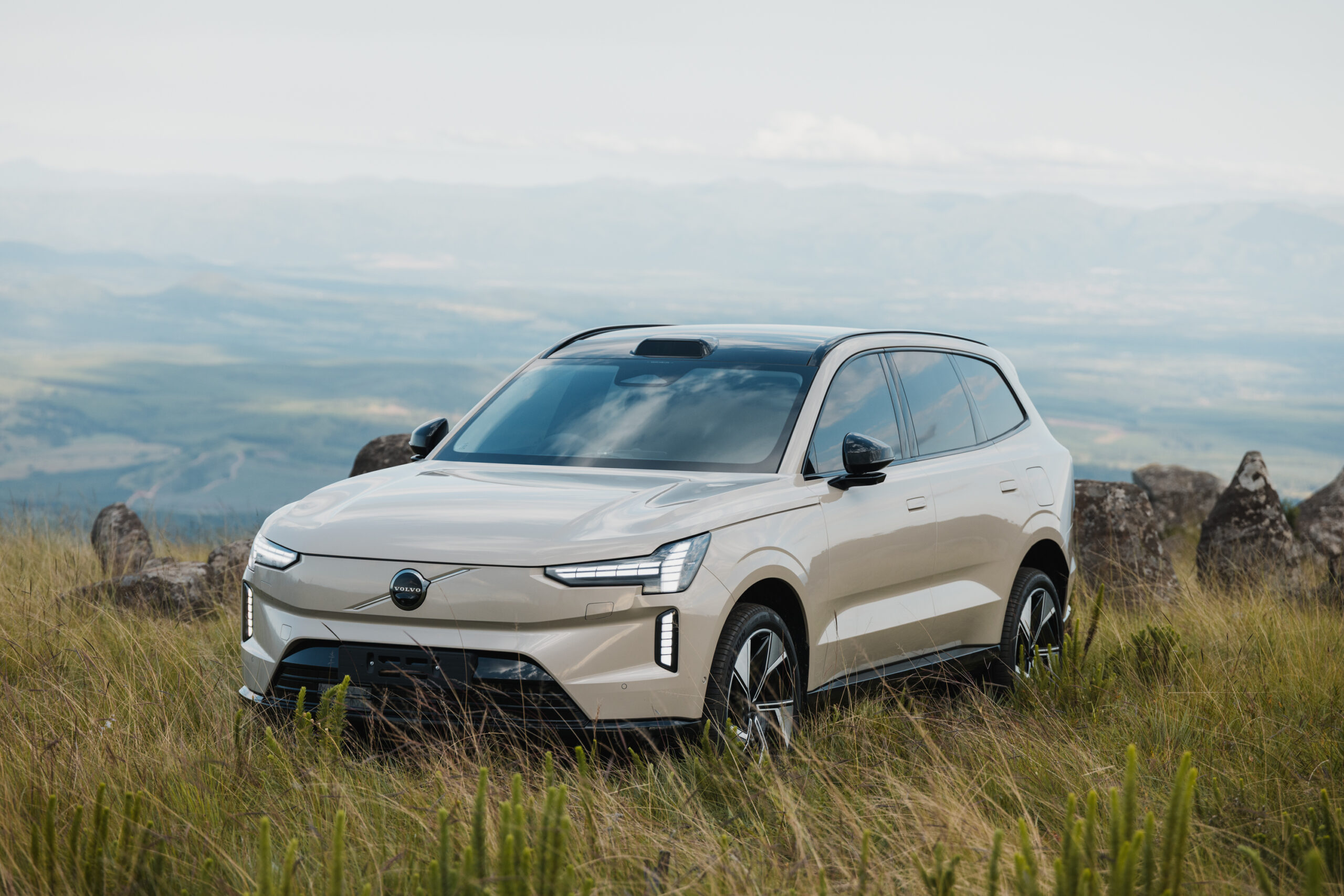Shrouded in mystery, Adam’s Calendar—also known as ‘Africa’s Stonehenge’—is believed to be one of the oldest human-made structures on Earth. Perched on a plateau in Mpumalanga, South Africa, this ancient stone circle has sparked endless theories about its purpose, from an astronomical calendar aligned with the sun and stars to a sacred site for a lost civilization.
Some say it dates back 75,000 years, challenging everything we think we know about Africa’s past. It stands as a reminder of a sophisticated pre-colonial world — one that understood the land, the skies, and, perhaps, even the energy beneath their feet. That sense of wonder, of reconnecting with something ancient yet still so relevant today, lent the journey a deeper significance. And making it in the Volvo EX90, a car that quietly redefines what progress looks like, felt more than fitting.
Landing in Johannesburg, I had a vague idea of what awaited me, but I wasn’t fully aware of its cultural significance. However, nothing could have prepared me for the sheer majesty of the vistas or the silent reverence that settled over the scene as we arrived.
The vessel that took me there was as remarkable as the destination itself. Finished in Sand Dune, a golden metallic hue reminiscent of a beach at sunset, the all-electric Volvo EX90’s minimalistic styling hinted at an equally minimalist yet inviting cabin.
The intuitive electric seat controls made finding my ideal driving position effortless. The clutter-free cabin enlivened by elegant wood trim and high-quality, sustainable materials, features two seamlessly integrated display screens. The 14.5-inch central display houses most of the vehicles settings, while a slim display in front of the driver shows essential information, such as speed and range.
Loading...
With up to 650km of range—more than enough for a foray into Mpumalanga’s most fascinating corner—I steered onto the N4 and headed for the Place of the Rising Sun. Immediately, the air-sprung suspension smoothed out Johannesburg’s notoriously rugged roads, absorbing imperfections with minimal fuss.
Perhaps what impressed me most was the EX90’s ability to cover great distances. Range anxiety—a common concern among EV drivers—was virtually non-existent. Equipped with a 111-kWh battery, the luxury SUV easily handled provincial travel. It’s proof that long-distance motoring in an electric car isn’t just possible, it’s practical.
The drive was almost meditative, a feeling that would surface again at Adam’s Calendar later that day. Arriving at the hallowed grounds, we were greeted by Edwin, our knowledgeable guide, regarded as one of the leading authorities on this mysterious site.
Setting off on a gravel forestry road, the EX90’s suspension continued to impress, soaking up undulations that would unsettle a lesser luxury vehicle. Gliding through the tree-lined path, it was almost impossible to believe that something so awe-inspiring lay hidden in such an unassuming location.

The megalithic stone calendar gained attention by pilot, Johan Heine, who stumbled upon the ancient site, where five-ton dolomite stones protrude from the earth, with a towering stone circle in the background.
As the EX90 effortlessly climbed toward its destination, I couldn’t help but think it was the ideal vehicle for exploration. Not only is it comfortable to drive, but its lack of carbon emissions means it can venture into nature without leaving a footprint. Adam’s Calendar overlooks untouched landscapes that have remained largely free from modern industry — a stark contrast to the metropolis we had left behind.
Approaching the site—almost with a sense of trepidation—one must wonder: What was its true purpose? Was it truly an astronomical tool? Does it harness power, as many believe? Or is it a sacred site that continues to attract those seeking spiritual experiences? Regardless of interpretation, one thing is clear: it showcases the ingenuity of a sophisticated pre-colonial civilization. How these stones were transported to this cliffside remains a mystery that even historians struggle to explain.
Like the EX90, which fosters a sense of calm through its hushed operation and flawless ride, Adam’s Calendar evokes a similar tranquility — albeit on a far grander scale. Standing among the imposing stones, surrounded by nature’s stillness and bathed in the amber glow of the African sun, one can’t help but feel at peace, if only for a moment.
While some believe Adam’s Calendar is an energy-channeling device—possibly even linked to other ancient sites—it felt fitting to take the EX90, one of the world’s most advanced electric vehicles, to a place that may have once represented the pinnacle of human achievement. If there is any truth to the idea that this site harnesses the Earth’s natural energy, it’s fascinating to consider that ancient civilizations once pursued ideas that today’s shift to electric mobility mirrors—relying on sustainable, renewable energy instead of depleting resources.
Ancient civilizations—like those that built Adam’s Calendar—designed their world to work with nature, not against it. Modern industry has abandoned this ethos for far too long, prioritizing profit and excess at the planet’s expense.
The EX90 represents a return to those principles. Volvo has exceeded expectations in sustainable innovation without sacrificing the comfort, performance, or practicality that modern motorists expect. With effortless performance and refinement, the EX90 competes with and surpasses the best petrol-powered SUVs in myriad ways.
Its zero-emissions powertrain allows for long-distance travel without burdening the climate. However, the EX90’s sustainability extends beyond the drivetrain. Volvo has integrated 15% recycled steel, 48 kg of recycled plastics and bio-based materials, and 25% recycled aluminum into its construction, demonstrating that innovation doesn’t have to come at the planet’s expense. Actual progress isn’t about discarding the past; it’s about rediscovering principles that have stood the test of time.
Departing Adam’s Calendar and Kaapschehoop, a herd of wild horses appeared on the horizon. This unexpected sight underscored the profound sense of wonder this ancient site evokes — an experience that feels as timeless as the stones themselves.
Adam’s Calendar serves as a reminder that South Africa is home to its own unique heritage, offering a depth of history and natural beauty often overshadowed by global icons like Stonehenge. It’s where the past and present converge, inviting South Africans to reconnect with the land and its ancient civilizations.

As the EX90 glided back toward Johannesburg, I couldn’t help but reflect on the journey. The parallels were striking: just as the world races toward a more sustainable future, the echoes of ancient wisdom remain. Perhaps real progress isn’t about reinventing the wheel — it’s about reconnecting with the knowledge that was always there.
The EX90 embodies this philosophy, staying true to Volvo’s legacy of safety, practicality, and quiet Swedish refinement while boldly stepping into a new era of electrification and sustainability.
Loading...
